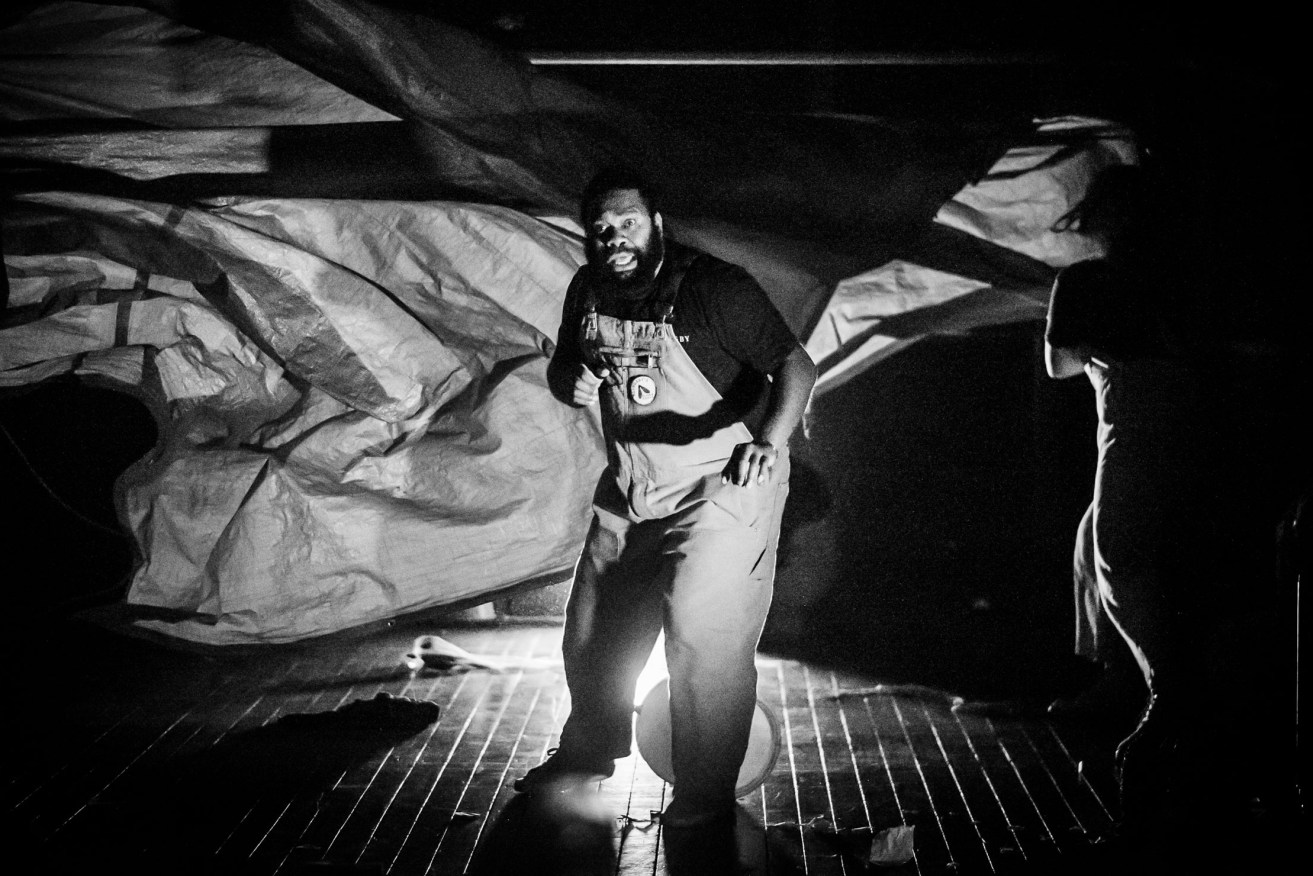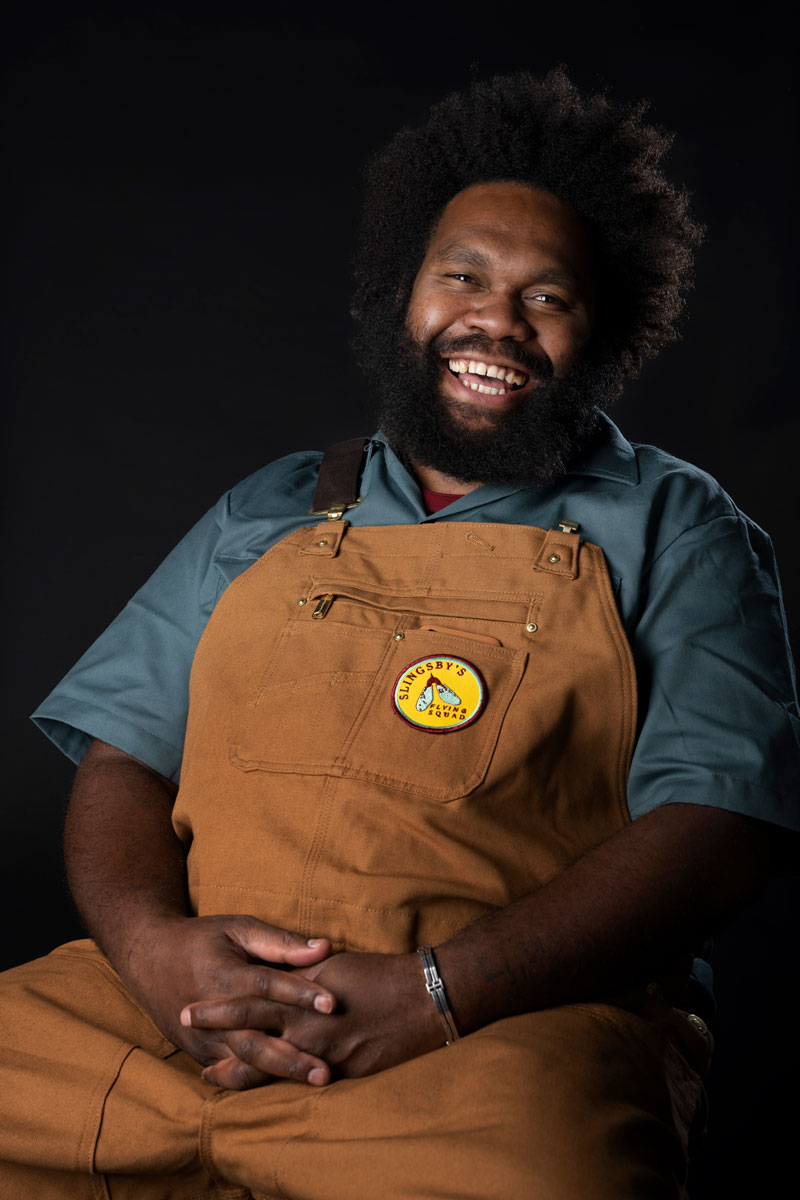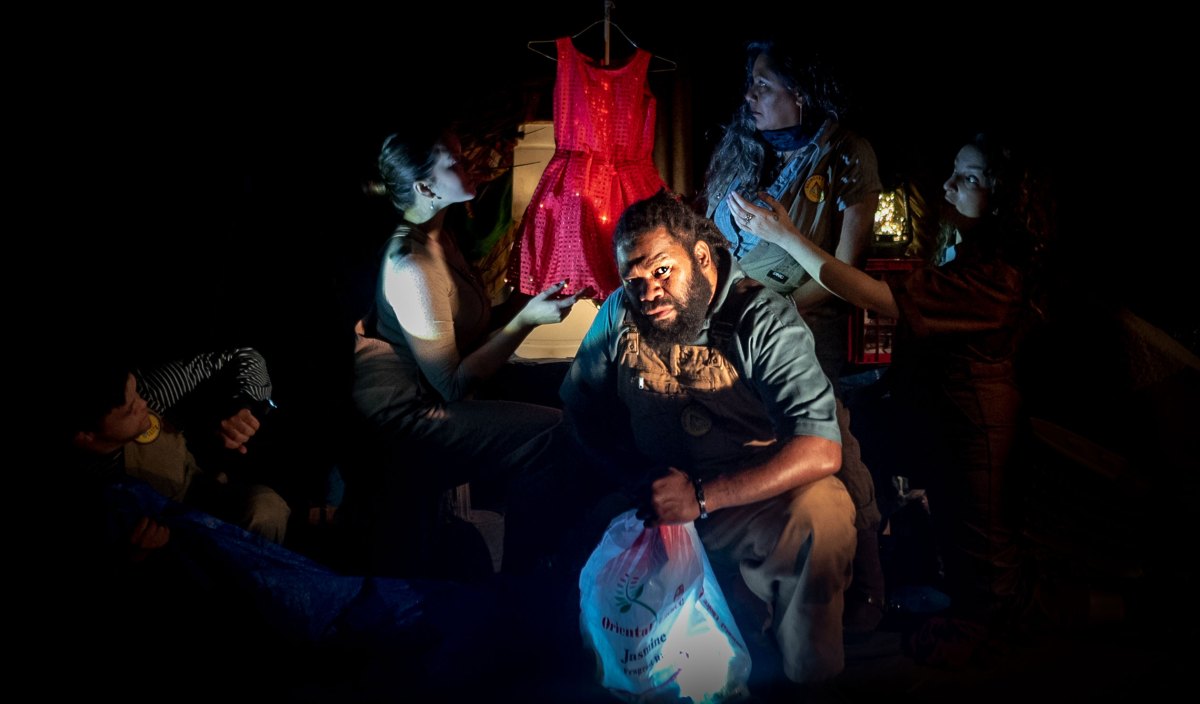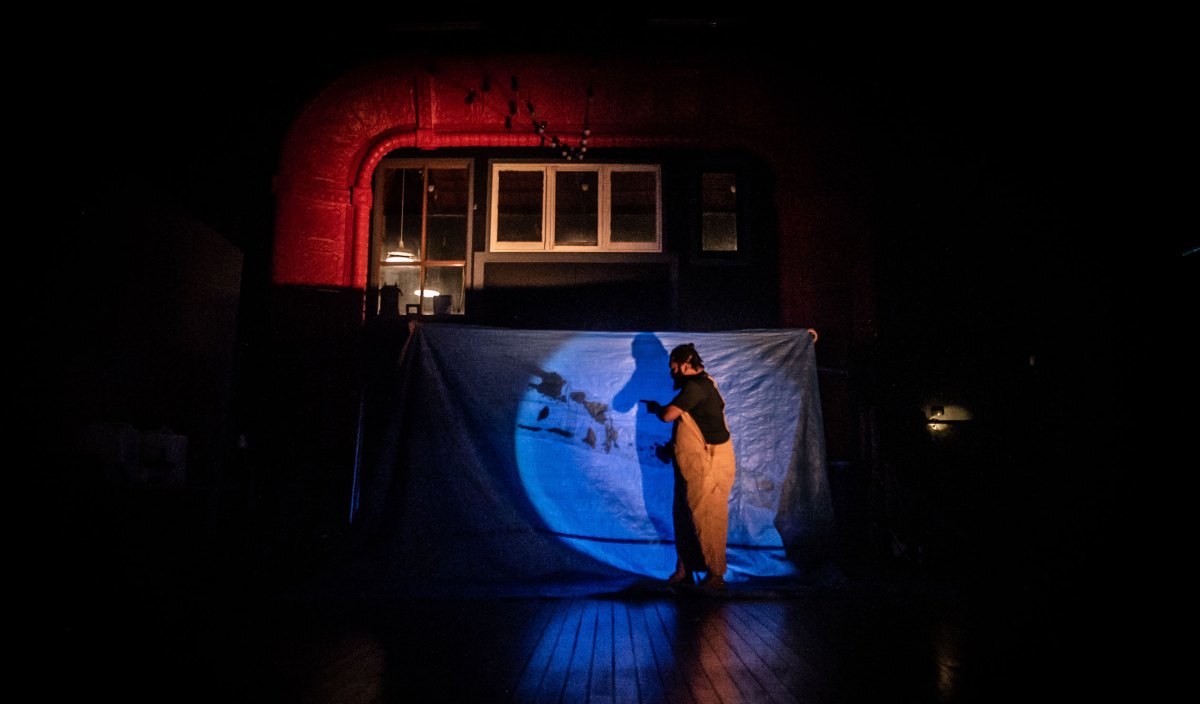A story from the eye of a cyclone
Ni-Vanuatu man Edgell Junior shares a vivid story of survival amid one of the South Pacific’s most intense tropical cyclones with a new show by Slingsby’s Flying Squad that carries both a warning and a message of hope.

Edgell Junior during rehearsals for Slingsby's Adelaide Festival show 'The River Than Ran Uphill'. Photo: Emma Luker
Edgell Junior has survived more than a few cyclones in his home country of Vanuatu. In fact, he recounts with a cheeky laugh, he and his mates used to have fun doing “dumb stuff” during cyclonic weather – like jumping on board broken fridges floating down a swollen river for a wild ride downstream.
But there was no such shenanigans when Cyclone Pam hit the South Pacific in March 2015, approaching Vanuatu’s islands with winds of up to 270 kilometres an hour. On that day, Edgell says, the water in the local river rose above the bridge.
“You know when you are at a concert, when the subwoofer kicks in?” he says, trying to explain the noise and feeling of terror that accompanied the tempest. “When you hear that in the dark, and with just a little glimpse of light you can see a 12-foot iron roof flying through the air like nothing, it’s really different.”

Today Edgell Junior lives in Adelaide and is a member of Slingsby Theatre’s Flying Squad. Photo: Emma Luker
Edgell, who comes from Pentecost Island, says the Ni-Vanuatu traditionally cut the branches and leaves off crops like cassava and coconut and banana trees to help protect them from cyclonic winds, but during Pam whole trees were uprooted and crops decimated. Power poles were brought down, iron lampposts crumpled “like croissants”, and homes were inundated.
“In my community, a lot of people lost their homes… my sister’s house [in Port Vila, on the island of Éfaté] was on top of the hill and water inside her house was up to here [waist level], so just imagine people who lived near the river.”
At the time, Edgell was part of the ensemble at Vanuatu’s Wan Smolbag Theatre, a Port Vila-based organisation with drama at its heart but which also operates youth centres and community facilities. The roof he saw ripped off was from the Smolbag sports centre. However, its other buildings ultimately provided shelter for locals rendered homeless by Cyclone Pam, which killed 16 people and is one of the most powerful tropical cyclones ever recorded.
Edgell moved to South Australia a few years ago after meeting his partner, Adelaide-based creative Sasha Zahra, when she was in Vanuatu delivering a program for Wan Smolbag’s anniversary. Today, he is a member of Slingsby Theatre Company’s Flying Squad ensemble, which is now bringing his cyclonic story vividly to life in a new show set to premiere at this year’s Adelaide Festival.
The River That Ran Uphill will incorporate shadow and light-play, live music and three-dimensional miniature worlds to transport audiences to the eye of the storm. It is based on a script Edgell wrote in his first language of Bislama and which was translated into English by Zahra.
The seed for the show was sown when Edgell told the story of Cyclone Pam to Slingsby CEO and artistic director Andy Packer, whom he affectionately calls “Boss Man”.
“Edgell’s a great storyteller,” Packer says. “He said to me one day: ‘Do you know the story of the river that ran uphill?’ And I said: ‘No, I don’t, but that’s a great name for a show’.”

Flying Squad members are in rehearsal for The River That Ran Uphill. Photo: Emma Luker
The Flying Squad, a touring ensemble of multi-skilled diverse SA artists that Slingsby established with government funding designed to help the arts sector recover after the pandemic, has a particular interest in sharing personal stories. To Packer, Edgell’s tale felt like a gift.
“It’s this very extreme story of survival but also there’s things that Edgell experienced in that cyclone which are difficult to explain and which we don’t try to explain – we just tell them; we tell what happened.”
Edgell, who is indeed an extremely engaging storyteller, hesitates when asked about these inexplicable things.
“During that cyclone I met someone there, I don’t know how…” he says, trailing off. “I was hiding… and then in that chaos I saw a little girl.”
He was sheltering from winds strong enough to rip off a grandstand roof and immobilise grown men, yet this child – only around six or seven – had emerged from the darkness and appeared to be defying the most powerful forces of nature to walk towards him and his friend through the cyclone. How could she have survived?
When Edgell was eventually able to take the girl to her parents, they explained she had been lost when the flooded river inundated their home.
“But the girl, she told me: ‘I was asleep and someone woke me up and took me by the hand and led me here…’
“So when Boss Man asked me about the cyclone, I said: ‘The cyclone was really, really bad, but something happened to me that time – I’ll never forget that cyclone.’ And that’s where the story starts.”
Packer adds: “There’s something about the strength and the fragility of that little girl – it’s very filmic.”

The River That Ran Uphill incorporates shadow and light-play. Photo: Emma Luker
The River That Ran Uphill, which is designed for an audience aged eight and up and is also touring to metropolitan and regional schools, condenses a lot into its 45-minute run time.
The story, told by Edgell, has as its protagonist a tiny girl who shows strength in the face of adversity and demonstrates “how the seemingly impossible can become possible when we work together”. It features seven acts, each of which is broken up by a moment that evokes the feeling of the cyclone through performance and the use of clever techniques and simple materials.
“Design-wise, we’re trying to use elements that may be found in Vanuatu, such as corrugated iron, jerry cans, small tarpaulins, and then we have cardboard and silhouette,” says Packer, who is co-directing the show with Clara Solly-Slade.
“And sound is a big part of conjuring up a storm… sometimes hearing that sound and the description of things that are flying past your view is quite evocative. We’ve got an audience that’s eight-year-olds up, so we have to give them that experience but we have to also create a space where they understand that we’re making that – we’re not dropping them in a storm – but that in a weird way can be more impactful, because theatre has that power.”
Importantly, Packer adds, The River That Ran Uphill offers a chance to reflect on the climate crisis, while at the same time providing a message of hope through illustrating how the Ni-Van community came together to face the full force of its impact.
Edgell, who says it is “a blessing” to be able to share his experience, agrees.
“There is something unique about our way of living. We share everything to the last drop; even if we have just one [loaf of] bread, we will share that… there’s always hope… the oneness or togetherness is always there.”
Slingsby will present The River Than Ran Uphill at the Adelaide Festival Centre’s Space Theatre from March 1-6 as part of the 2023 Adelaide Festival.
Read more Adelaide Festival stories here.




